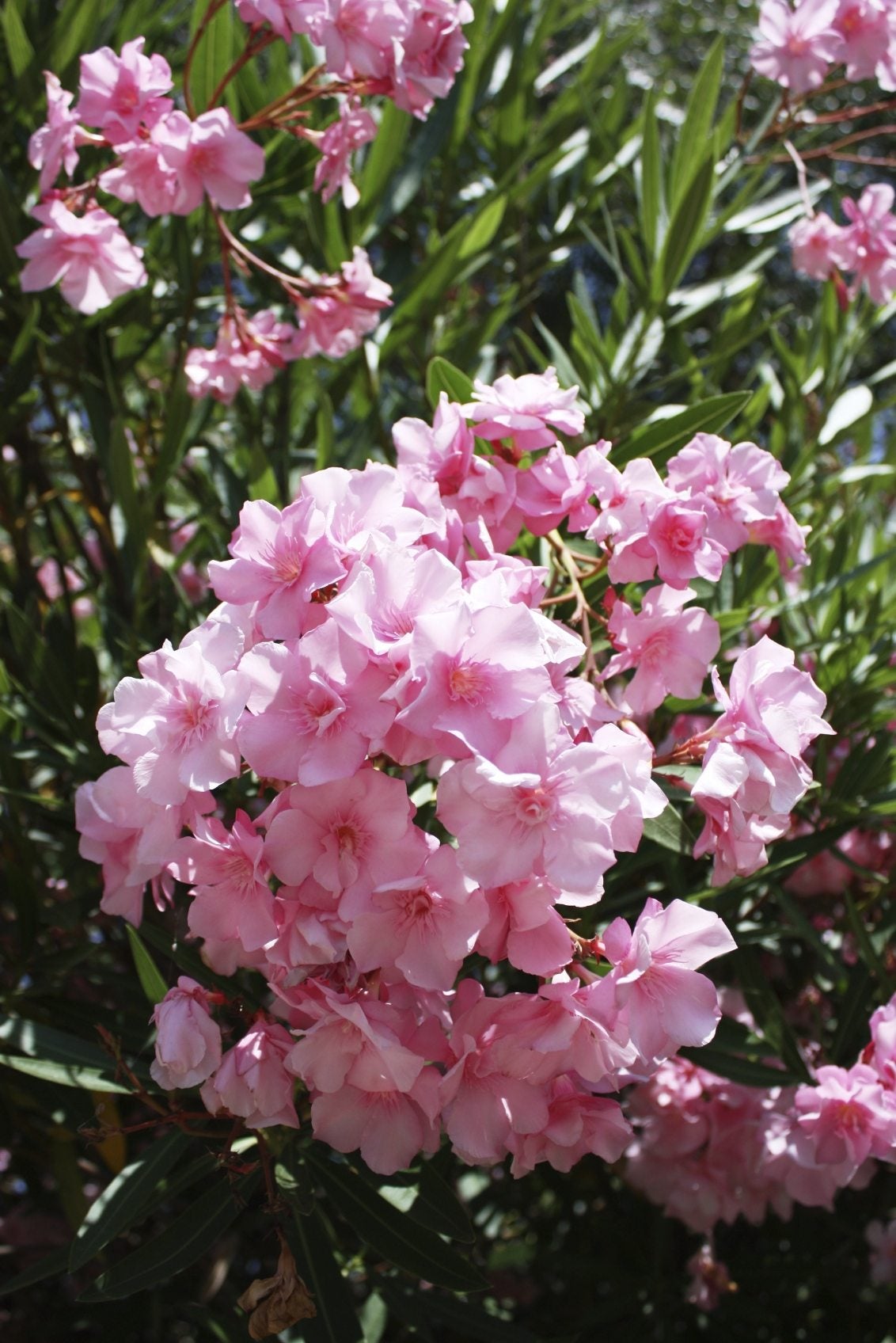Fertilizer For Oleander Plants – How And When To Feed Oleanders

If you live in Galveston, Texas or anywhere in USDA zones 9 through 11, you’re probably familiar with oleanders. I mention Galveston, as it is known as the Oleander City due to the abundant numbers of oleanders planted throughout the city. There is a reason oleander is such a popular landscape choice in this region. Oleanders are tough and suited to a variety of soil types. This raises the question of when to feed oleanders. Do you need fertilizer for oleander plants and, if so, what is a good fertilizer for oleander?
Fertilizing an Oleander
Oleanders are hardy plants that can grow up to 3 feet (1 m.) in one season. Plants damaged by cold will often re-grow from the base. They can live for more than 100 years, reliably providing the gardener with their stunning summer to midfall clusters of large, 2 inch (5 cm.), double blossoms in dizzying hues of pale yellow, peach, salmon, pink, deep red, and even white. These gorgeous blossoms are perfectly offset by the large, smooth, deep green, thick, leathery leaves. The fragrant flowers and pleasing habit along with their ability to withstand poor soil make them an ideal choice for many gardeners. Once established, oleanders are even drought tolerant. They tolerate coastal conditions and anything from sand, clay, to salty soil. Given the forgiving nature of the plant, is fertilizing oleander necessary?
When to Feed Oleanders
Oleander plant fertilizer is not usually necessary since, as mentioned, they are a fairly low-maintenance plant. In fact, they rarely need any soil amendments or fertilizer at planting. Fertilizing oleanders can actually burn the roots and cause damage to the plants. If you do have extremely heavy soil, you can amend it a bit with a few shovelfuls of compost or peat moss. Again, oleanders rarely need additional fertilization, especially if they are growing near a fertilized lawn where they will uptake some of those nutrients. If your soil is really poor and you notice the leaves are pale, slow to grow, or the plant bears few flowers, you might need to give the plant a perk up. So, what is a good fertilizer for oleander plants? If you determine that the plants would benefit from a feeding, apply a 10-10-10 fertilizer in the spring and again in the fall at the rate of ½ cup (120 ml.) per plant. If you are growing container oleanders, the plants should be fertilized more frequently, as the nutrients leach out of the pots. Apply 3 to 4 tablespoons (45-60 ml.) of a granular 10-10-10 fertilizer every four to six weeks.
Gardening tips, videos, info and more delivered right to your inbox!
Sign up for the Gardening Know How newsletter today and receive a free copy of our e-book "How to Grow Delicious Tomatoes".

Amy Grant has been gardening for 30 years and writing for 15. A professional chef and caterer, Amy's area of expertise is culinary gardening.
-
 Looking For Plants To Give You The Soft And Fuzzies? Try These 5 Fuzzy Leaf Plant Options
Looking For Plants To Give You The Soft And Fuzzies? Try These 5 Fuzzy Leaf Plant OptionsLovers of texture, drama, silver foliage and tactile plants will adore these special sensory garden additions. These fuzzy leaf plant options will leave you all aglow
By Susan Albert
-
 Get Ready For A Summer Of Hummers! Grow These Full Sun Hummingbird Plants and Flowers
Get Ready For A Summer Of Hummers! Grow These Full Sun Hummingbird Plants and FlowersIf you’re lucky enough to enjoy a sunny backyard, make sure you are maxing out on your pollinator opportunities and grow these full sun hummingbird plants and flowers
By Tonya Barnett